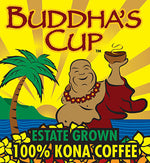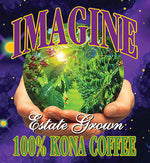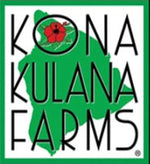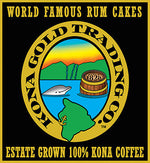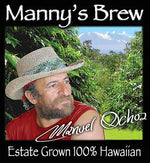There’s a moment on any visit to a wine estate when the earthy perfume of fermenting grapes envelops you. If you’ve ever stood in a Kona coffee roastery as fresh beans crackle and caramelize, you know that same sensation of place.
In both settings, the air is thick with stories: soil, sun, climate, and the hands of artisans. Coffee and wine similarities go far beyond the cups we raise.
Both are deeply rooted in terroir, shaped by craft, and steeped in tradition. In this post, we’ll walk you through those parallels, using our own family‑run farm, Buddha’s Cup, as your guide.

Key Takeaways
- Climate, soil, and elevation define unique profiles in wine, with coffee and tea similarities also tied to altitude, rainfall, and sun.
- Just as Cabernet differs from Pinot Noir, Arabica cultivars and tea types show wide diversity, underscoring coffee and tea similarities.
- Fermentation, drying, and aging transform aroma, body, and complexity, revealing coffee and tea similarities with wine.
- Fruity, floral, nutty, earthy, and bright acidity highlight coffee and tea similarities in tasting language.
- Winery tours, coffee cuppings, and tea ceremonies reflect coffee and tea similarities in celebrating craft and community.
- Wine improves with age, coffee peaks fresh, and tea balances between, enriching the study of coffee and tea similarities.
What Is Terroir? How Location Shapes Flavour

Terroir (a French term that captures the influence of the environment on flavour) is the backbone of fine wine. Elements such as soil composition (limestone, clay, gravel, volcanic ash), climate (cool vs warm), and geography (altitude, slope, proximity to water) shape a wine’s personality.
Gravelly soils drain quickly and lend elegance, while warmer Mediterranean sites produce richer, fruit‑forward wines. Cooler regions allow grapes to ripen slowly, preserving acidity and nuance.
How Terroir Shows Up In Flavour
Coffee thrives in the tropics, where elevation, shade, rainfall, and mineral-rich soil shape acidity, sweetness, and body.
On Kona’s volcanic slopes at 2,000 feet, porous lava soil and afternoon clouds create beans with citrusy brightness, chocolate depth, and a silky body. Just as cool climates give wine higher acidity and warmer regions bring a fuller body, high-altitude coffee develops dense, complex flavors, while volcanic soils add a mineral edge.
A cup of our Medium Dark Roast, with hints of honey and vanilla, carries the taste of Kona’s slopes.
Variety And Single Origin Vs Single Vineyard
Just as Pinot Noir offers delicacy compared to the boldness of Syrah, coffee species express their own personalities.
Arabica, which makes up most global production, is valued for sweetness and complexity, while Robusta delivers more caffeine and a stronger, bitter edge.
Within Arabica, countless cultivars respond uniquely to terroir and processing, much like grape varieties in wine. In both worlds, origin matters. A single-vineyard wine highlights the character of one plot, just as single-origin or single-estate coffee showcases the pure expression of a farm or micro-lot.
Blending also plays a role, with Bordeaux wines and espresso blends balancing flavors, while single origins invite us to explore subtlety and nuance.
Buddha’s Cup’s Approach
Our single‑estate philosophy is at the heart of our craft. Each of our five farms produces its own line of coffee with tasting notes unique to that micro‑climate, all shaped by Kona’s one-of-a-kind growing region.
For example, Manny’s Brew combines five varieties planted near the Kahaluʻu ʻŌhiʻa Forest; its cup is bright with citrus, sandalwood, and milk chocolate.
Meanwhile, Dry Natural Cherry Blossom undergoes a natural process that infuses a sweet, cherry‑like finish. By keeping our lots separate, we allow you to experience the landscape in every sip.
Processing Methods: From Harvest To Finish

The journey from fruit to glass or cup is shaped by every step of production. How grapes or coffee cherries are harvested, fermented, and aged determines the flavors, aromas, and textures we experience.
Wine Production Steps That Affect Flavor
Harvest timing influences sugar and acidity: early picking preserves freshness while later harvests yield a fuller body.
Fermentation transforms sugars into alcohol, and aging vessels such as oak barrels or stainless steel leave their mark. Oak lends vanilla and spice, while steel preserves pure fruit, as explained in Wine Folly’s guide to winemaking processes.
Coffee Processing & Roasting
In coffee, the journey from cherry to cup is equally transformative. After selective picking, we choose a processing method:
- Washed process. Pulped cherries ferment to remove mucilage, yielding a clean, bright cup with pronounced acidity.
- Natural and honey processes. Whole cherries or those with some mucilage attached dry in the sun, allowing the fruit to impart bold, fruity notes and a heavier body.
- Experimental fermentation. Borrowed from winemaking, techniques like anaerobic fermentation and carbonic maceration create exotic flavours.
At Buddha’s Cup, we hand-pick only ripe cherries, sun-dry them to concentrate sweetness, and roast them in small batches.
Our UVB infusion step, a gentle application of ultraviolet light, enhances aromatic compounds without altering the bean’s character.
Taste, Aroma & The Language Of Description
Coffee and wine similarities show up in the way we describe them. Both use tasting terms like fruity, floral, nutty, earthy, and chocolaty, with tools such as the Wine Aroma Wheel or Coffee Flavor Wheel helping to structure aroma, body, and finish.
Developing your palate is simple: try two single-origin coffees side by side, notice the acidity, sweetness, and texture, and compare your impressions with tasting notes.
For example, our Medium Roast balances caramel and citrus, while Manny’s Brew offers citrus brightness with a chocolate finish. These notes are a guide to help you build your own language of flavor.
Tradition, Culture, And Rituals Around Coffee & Wine
Across the world, both beverages inspire ceremonies and tourism. Wine lovers stroll through vineyards and taste with sommeliers, revering vintages and terroir; coffee devotees participate in Ethiopian ceremonies, slurp cuppings, and tour roasteries.
You can join Buddha’s Cup farm tours to see orchards and drying beds and hear stories about our biodynamic practices. As you swirl a glass or slurp from a spoon, the shared ritual becomes about community, storytelling, and honoring the land.
Similarities In Evaluation, Scoring, And Quality Standards
Coffee and wine similarities extend into how each is judged for quality. Both use a 100-point scale to highlight consistency and excellence.
In wine, scores above 90 points are considered superior bottles, while in coffee, the Specialty Coffee Association defines anything scoring 80 points or higher as specialty grade.
Critics and cuppers look for balance, aroma, and finish, noting any flaws along the way. The exchange goes further, too.
Specialty coffee has adopted winemaking methods like carbonic maceration, while small wineries now embrace the kind of traceability that coffee producers pioneered. Together, they show a wider craft movement built on authenticity, transparency, and respect for origin.
Differences Worth Noting
While coffee and wine similarities are strong, a few differences stand out:
- Alcohol vs. caffeine: Wine is alcoholic and tied to leisurely enjoyment, while coffee is caffeinated and part of daily routines.
- Aging potential: Fine wines can age for decades and evolve in flavor, while roasted coffee tastes best fresh and fades if stored too long.
- Serving and storage: Wine is poured at specific temperatures and kept in cool cellars. Coffee is brewed hot, cooled slightly for tasting, and stored in airtight containers to preserve freshness.
How To Appreciate Coffee Like Wine (Tips For The Consumer)

Want to bring the same care to your morning cup that a sommelier brings to a glass of wine? A few simple steps can transform tasting into a richer, more mindful experience:
- Set the scene: Use clean cups, filtered water, and freshly roasted beans. Grind just before brewing and aim for a 195–205 °F brew with a 1:16 ratio of coffee to water. This is similar to serving wine at the right temperature in proper glassware.
- Smell and sip: Take in the aroma before tasting, then slurp gently to aerate. Notice acidity, sweetness, body, and finish. Comparing a few coffees side by side works just like sampling different wines.
- Note and pair: Keep a simple notebook for descriptors. Over time, you will start to recognize patterns. Try pairing too, with bright coffees complementing citrus desserts and darker roasts matching well with chocolate or nuts.
- Visit and explore: Touring a coffee farm brings the experience full circle. If possible, tour a coffee farm; we’d love to host you on one of our Kona Coffee Tours. Seeing the trees, soil, and processing methods deepens appreciation, and joining our Coffee Club lets you explore new origins each month.
- Practice mindfulness: Brewing at home or tasting in a café is a chance to slow down. Focus on your senses, ask questions, and enjoy the journey the same way you would with a fine wine.
Bringing It All Together

Coffee and wine share a rich language of taste. Both are shaped by the land, nurtured by skilled hands, and carry the story of where they come from.
The minerality of a Chardonnay and the floral sweetness of a Kona pour-over each reveal how terroir, varietal, and processing create something unique. Appreciating coffee like wine is an invitation to slow down, taste with intention, and connect with the people and places behind every sip.
Visit our About Us page to learn more about our family’s journey, tour our farm, or join our Coffee Club to receive our latest harvests.
Mahalo for joining us on this journey; may your next cup speak volumes.
FAQ
What does “terroir in coffee” mean?
Terroir in coffee refers to how altitude, climate, soil, and farming practices shape flavor, much like terroir does in wine. Beans grown at higher elevations often develop bright acidity and sweetness, while lower, warmer sites produce gentler cups.
On the volcanic slopes of Kona, misty afternoons and mineral-rich soil create the chocolate and citrus notes that define the wine of the tropics. This unique profile is confirmed through Q Grader evaluation, which scores coffees on flavor, aroma, and balance.
Is coffee graded like wine?
The Specialty Coffee Association uses a 100-point scale where anything above 80 qualifies as specialty, and 90 or higher is outstanding. Wine critics use similar numeric scales, though their criteria differ.
This is one of the clearest examples of coffee vs wine alignment in quality standards.
Can coffee age like wine?
Not really. Fine wines can mature for decades, but roasted coffee shines brightest when fresh. Green beans can be stored for several months in sealed bags, yet once roasted, they lose aromatics quickly.
For the best results, brew within weeks of the roast date and store beans in an airtight container.
What’s the difference between washed and natural coffee?
In the washed process, fruit is removed before drying, which creates a clean, bright cup. In the natural process, whole cherries dry in the sun, producing fruity, wine-like flavors and a heavier body.
Honey and experimental methods fall in between.
These approaches highlight the artistry of coffee like wine, and together they show how specialty coffee and wine both celebrate the link between craft and origin.




